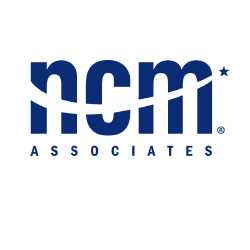The Resilience Checklist

Recently, I was invited to moderate a session at a DrivingSales Conference in Miami, Fla. The topic at hand was dealer resilience. The meeting asked dealers in the room, "How would you handle a 20 percent decline in volume or a 50 to 100 basis point rise in interest rates and what about a labor shortage?” Think it can’t happen?
Increasing interest rates
The last few years, we have seen the government prop up the nation with prolonged stimulus and loose monetary policy while impairing sustainable growth. In December 2015, the Federal Reserve raised rates by 25 basis points; this was the first increase since 2006. The Fed has recently increased it another 25 basis points, and the projection is for 2 to 3 more increases next year. How will this affect your profitability, your property values, rent factor, or your ability to acquire new stores?
Changing marketplace
What of other external threats to our business, such as negligence from the manufacturers, disruptive markets, or the state of consumer finance? Internally, dealers may suffer from a poor reputation in customer experience, labor inefficiencies, and a stagnant business model that can ruin net worth. A 2015 Customer Experience Research report by DrivingSales stated that only 26 out of 4,000 consumers prefer the current car buying process. As they explain—and I agree—the Apples and Amazons of the world have trained modern shoppers to seek out a different buying experience.
Experian has reported that auto loans reached an all-time high in Q1 of 2016. The debt totaled over $1 trillion, up 10 percent from Q1 2015, and they are watching delinquencies closely. According to the Federal Reserve Bank, the average length of a new car loan is 64.6 months.
A 2015 Cox survey had some good news for dealers despite the abundance of those disruptive market sites capitalizing on direct-to-consumer transactions: 81 percent still prefer to buy in-person versus online. The customer still doesn’t like the process, but they want to deal with a real person and be able to touch and feel the vehicle.
Rising labor costs
Operationally, the automotive industry’s biggest expense is labor. According to NADA’s Chief Economist, dealers often pay 15 percent more than US averages for labor and have been increasing wages at twice the rate of comparable sectors all while experiencing turnover rates up to 3 times the US average. On the topic of expenses, President of ReverseRisk and one of the speakers at the conference, David Spisak, stated that “many dealers fail to quantify their true costs when manufacturers redistribute margin on their financial statements.” So what happens when the OEM pulls the program?
The Resilience Checklist
Despite the brilliance of the speakers at the conference, none have “THE ANSWER” to all of the questions we face in today’s car business … I don’t believe anyone truly does have all the answers. However, I think this short resilience checklist is a useful tool for your dealership:
- Stress test your profit and loss (P&L) and balance sheet for a 30% SAAR drop and/or interest rate increase of 3-5%.
- Secure long-term financing while rates are low, if possible.
- Develop and track a true P&L independent of OEM incentives and financial manipulation. Wean yourself off dependency on manufacturer programs. Operationally, modernize your labor practices. Build and implement an attractive employment brand. Culture, compensation plans, internal policies, and positive impacts of the organization externally should be optimized to attract and retain a more diverse, cost-effective talent pool that can deliver a superior customer experience.
- Re-engineer inefficient departments and processes. Streamline organizational structure to provide a seamless customer experience to remove hand-offs and overhead. Used cars and fixed operations are huge areas of opportunity to recover lost margin in new cars and execute a customer retention strategy.
- Future proof your business by exploring how to position your dealership to benefit from changes in how consumers purchase mobility.
So many questions in so many areas. The truly great news is that—almost to a man (or woman)—car dealers can adapt and overcome challenges. Well, some faster than others. Make sure you’re one of the fast ones!
Learn more about Tony Albertson and how he and his NCM colleagues can help your dealership through 20 Groups and in-dealership consulting.
